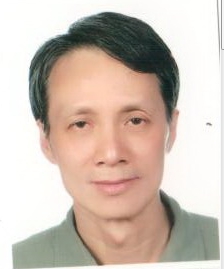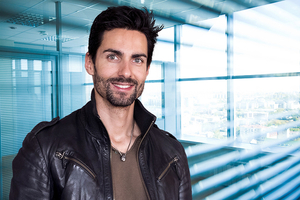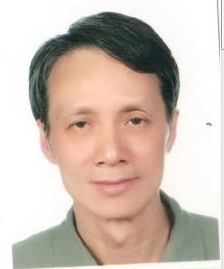Day 1 :
Keynote Forum
Chien-Ping Ju
National Cheng-Kung University, Taiwan
Keynote: A low modulus Ti-7.5Mo alloy for dental and orthopedic applications

Biography:
Chien-Ping Ju received his Ph.D. from Marquette University (Milwaukee, Wisconsin) in 1982. He is a Professor of Dept of Mater Sci & Eng, National Cheng-Kung University (Tainan, Taiwan). He also serves as Technology Founder/VP/CTO of Joy Medical Devices Corp. (Kaohsiung, Taiwan). He has published 100+ SCI papers along with 70+ US patents and 100+ non-US patents
Abstract:
A biocompatible, low elastic modulus Ti-7.5Mo alloy with an alpha-double-prime (α”) orthorhombic crystal structure for medical applications has been developed at National Cheng-Kung University (NCKU). The mechanical properties of this alloy can be adjusted via different processes for different applications. Its ultimate tensile strength/modulus ratio through one specific process can be more than 200% of Ti-6Al-4V ELI, 300% of grade-4 cp-Ti, and 500% of grade-2 cp-Ti, while its elongation can be adjusted to 10-40%, depending on the application. The low modulus feature is expected to reduce the stress-shielding effect often observed in rigid metallic and ceramic implantation studies. This Ti-7.5Mo alloy is expected suitable for making a dental crown & bridge, RPD, dental implant, orthopedic fixation, miniplate, etc. A head-to-head comparison between α” Ti-7.5Mo and the popularly-used grade-2 cp-Ti in dental casting-related performance shows that cast Ti-7.5Mo alloy performs consistently superior to the cp-Ti. In addition to its much better castability (by 25-100%, depending on wax paten design) and machinability, the unique combination of higher strength and lower elastic modulus of Ti-7.5Mo alloy offers a far higher elastic recovery angle which has advantages over cp-Ti for certain applications such as RPD clasps. The interesting cold working-induced α’’-α’ phase transition phenomenon is also discussed in this presentation. The research was funded by the Ministry of Science and Technology (MOST) Grant No. 107-2221-E-006-016.
Keynote Forum
Augusto André BAPTISTA
Baptista Dental Group, Luxembourg
Keynote: Minimally invasive aesthetic treatment of a multiple anterior dental agenesis in young patient
Time : 10:15-11:00

Biography:
Augusto André BAPTISTA, PhD of Oral and Dental Surgery from Faculty of Nancy. Master's degree in biomedical research. Former chief resident of Oral Surgery in Nancy University Hospital. Postgraduate degree in Surgical Odontology, Aesthetics, Periodontology and Prosthesis. Creator & founder of the BAPTISTA DENTAL GROUP Clinic, he practices Oral and Implant Surgery as well as Cosmetic Odontology in Luxembourg. His areas of expertise are complex global oral treatments, with a biomimetic, minimally invasive and aesthetic approach. To his credit: many national and international publications.
Abstract:
Abstract:
Nowadays, aesthetic is no more an option in our treatments, especially in young patient who is at a critical time of his social integration. This challenge have to be manage by a minimally invasive way, guided by a therapeutic gradient. We need to lavish treatment aesthetic, functional, biomimetic and the atraumatic for the tissues as possible. This paradigm shift is induced by the fact this young patients have to growth, live and evolve with our treatments in a long term period of life. This clinical case shows a minimally invasive way to restore the aesthetic and function of a multiple dental agenesis in the anterior zone of the maxilla in a young patient.
Keynote Forum
Fatma Elhendawy
Tanta University, Egypt
Keynote: Pediatric full mouth rehab under general anesthesia
Time : 14:20-16:00

Biography:
Abstract:
Keynote Forum
T Dinesh Kumar
SRM Institute of Science and Technology, India
Keynote: Herbal immunomodulatory panacea: Role of triphala in immune-enhancement of human leukocytes and its prospective application as an immunomodulatory therapeutic agent

Biography:
Abstract:
- Pediatric Dentistry | Oral and Maxillofacial Surgery | Cosmetic Dentistry | Orthodontics | Dental Anesthesia | Preventive Dentistry | Dental Clinic Management | Dental Implants | Digital Dental Technologies | Dental Nursing
Location: Conference Hsll

Chair
Chien-Ping Ju
National Cheng-Kung University, Taiwan
Co-Chair
Fatma Elhendawy
Tanta University, Egypt
Session Introduction
Arghavan Tonkaboni
Tehran University of Medical Sciences, Iran
Title: Dietary Intake Effects on Chemotherapy or Radiotherapy Induced Mucositis
Time : 11:20-11:50
Biography:
Abstract:
Biography:
Marwa Baraka is working in Tanta University, Egypt
Abstract:
Introduction: Various forms of malocclusion are usually encountered in non syndromic cleft lip and palate, mostly affecting maxillary dental arch.
Objective: To assess the dental arch parameters in surgically treated unilateral cleft lip and palate Egyptian children with mixed dentition and compare them with those of comparable healthy non-cleft children.
Material and methods: Comparative cross-sectional study design was used. Twentysix non-syndromic children with repaired unilateral cleft lip and palate (UCLP), aged 6-9 years, were compared to twentysix healthy non-cleft children (control group) recruited from Faculty of Dentistry, Alexandria University. Both groups were divided into two age groups; 6-7 years and 8-9 years. For each subject, dental arch parameters were measured using dental study models.
Results: Mean maxillary arch depth and inter-canine arch width were significantly smaller in UCLP children than in non-cleft children in the age groups 6-7 and 8-9 years. Mean inter-molar arch width was not significantly narrower in UCLP children than in non-cleft children. Mean mandibular arch dimensions of UCLP children did not differ significantly from those of non-cleft children. The mean Goslon Yardstick score was 3. Conclusions: Children with UCLP, aged 6-9 year old, had significant reduction in mean maxillary arch dimensions compared to healthy matching non-cleft children except for inter molar arch width which showed no significant reduction. The average dental arch relationship in surgicallyrepaired UCLP children was fair according to Goslon Yardstick index.
Arghavan Tonkaboni
Tehran University of Medical Sciences, Iran
Title: Oral lichen planus in children in association with psychological stress: a case report
Biography:
ARGHAVAN TONKABONI is working at the Department of Oral & Maxillofacial Medicine, School of Dentistry, Tehran University of Medical Sciences, Tehran, Iran. She has completed his DDS degree at the age of 25 years from Tehrasn University of Medical Sciences and also has continued M.S. studies in the fiel of ORAL & MAXILLOFACIAL MEDICINE, from Mashahd University of Medical Sciences 2011. She was head of department ORAL & MAXILLOFACIAL MEDICINE DEPARTMENT, School of Dentistry, 2012-2017. She has published more than 20 papers in reputed journals and has been serving as an editorial board member of repute.
Abstract:
Kamla Naveeda
Islamabad Medical and Dental College, Pakistan
